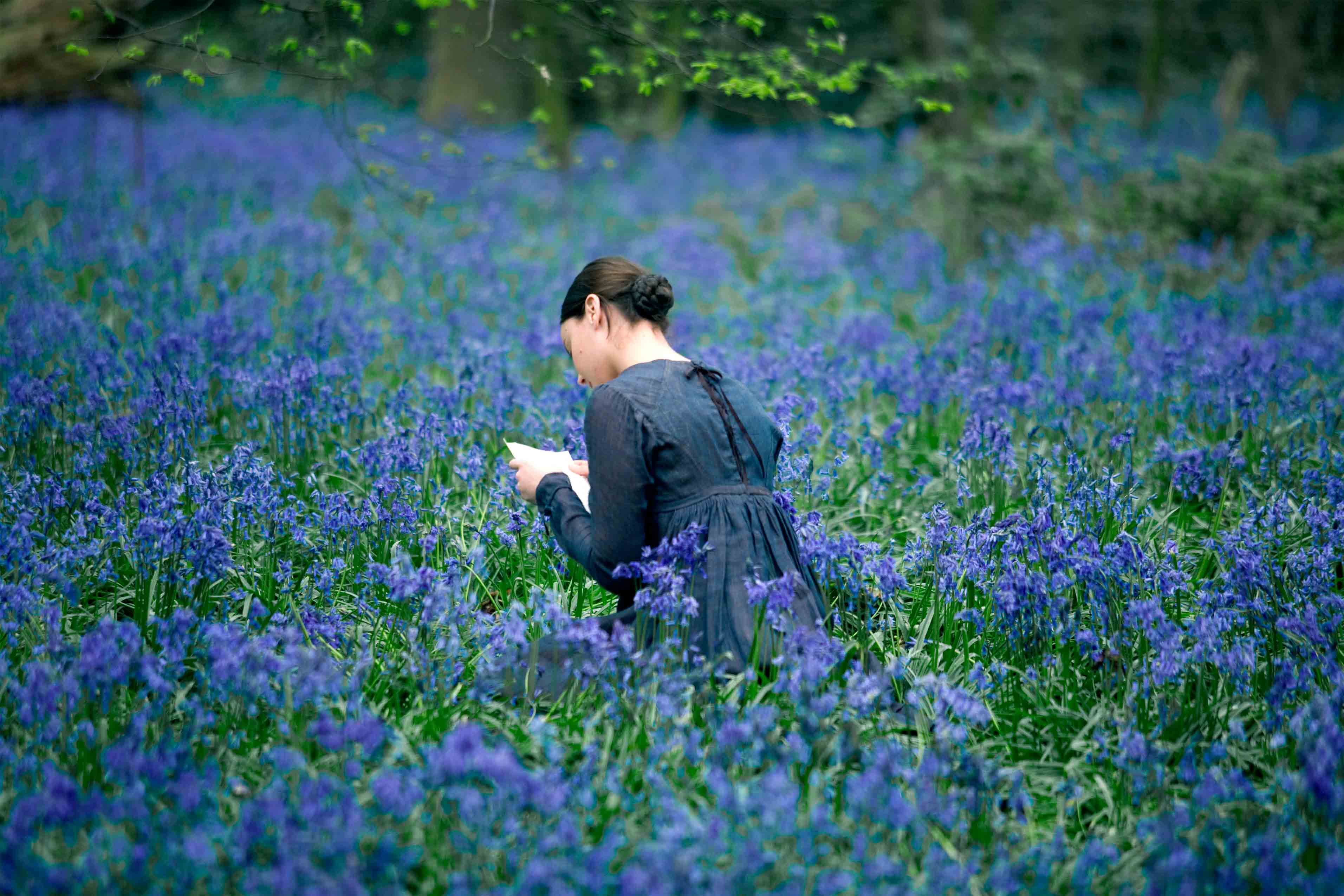
A woman’s character is always a conundrum for men, but they can’t resist their beauty. There are so many films where directors have used women’s beauty as main weapon to achieve greatness.
This list has collected visually stunning films where you can see the strikingly beautiful beauty of women, as well as their character, activities, costumes, and feelings. In short, they focus on womanly elements in an exquisitely beautiful style. So, many of these films are of a romantic genre. These films may touch upon different themes but all have the stunning beauty of woman and womanly elements, and you’ll be hypnotized watching all of these films.
Here are 30 visually stunning films that can be mainly remembered for brilliantly depicting women’s beauty.
1. The Double Life of Veronique (Krzysztof Kieslowski, 1991)
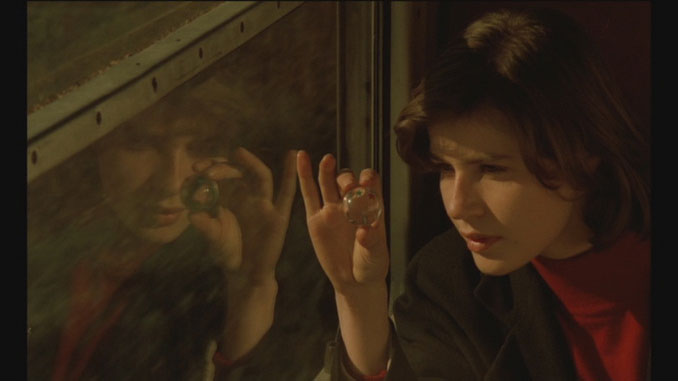
Who is more beautiful? Veronique or Weronika? Although the same gorgeous actress, Irene Jacob, plays both characters, this question haunts us forever. Watching this film makes us feel as if Irene is the most beautiful woman who ever lived, at least in cinema. It wouldn’t be hyperbole if one says that Irene became immortal just by playing this incredibly and indescribably beautiful masterpiece.
The non-erotic sex scene of “The Double Life of Veronique” is possibly the most beautiful sex scene in film history. She is beautiful in all moments of the film, and her beauty is even more intensified by Kieslowski’s masterful direction and Slawomir Idziak’s mesmerizing cinematography. Her musical life is glorified by Zbigniew Preisner’s opera songs and score. She is innocent, kind-hearted, lovely and sensitive as both Veronique and Weronika.
2. The Mirror (Andrei Tarkovsky, 1975)
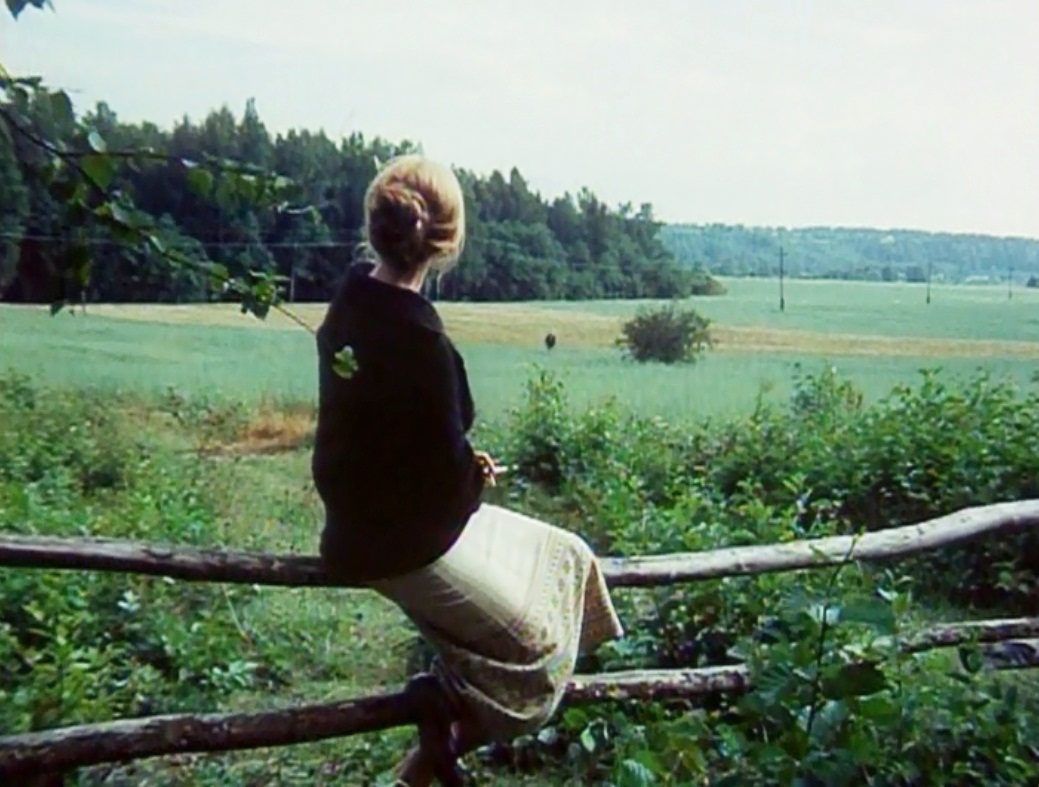
This is the film that actually inspired “The Double Life of Veronique” to a great extent, especially in depicting the beauty of female lead. Kieslowski was a big fan of Tarkovsky and that inspiration isn’t any surprise. Tarkovsky used the beauty of Margarita Terekhova, who is a middle-aged woman who has two sons.
In this highly poetic, stunningly beautiful and intensely hypnotic film, Terekhova’s beauty is one of the greatest things that Tarkovsky used so masterfully. The slow running pace and Margarita’s bathing scene influenced Kieslowski (compared with “Veronique”). Tarkovsky’s films are all beautiful and this one is his most beautiful, poetic, experimental and personal film as well.
3. In the Mood for Love (Wong Kar Wai, 2000)
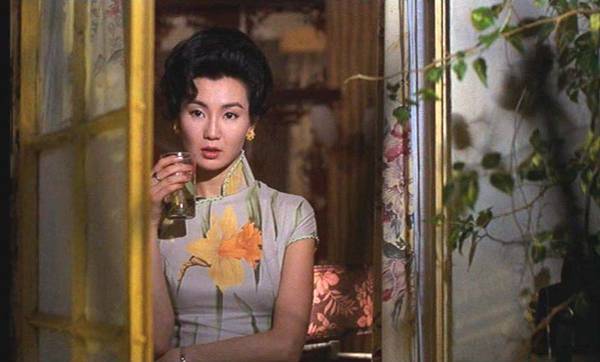
Another name of “In the Mood for Love” is Maggie Cheung. Its name should be changed to “In the Mood for Maggie.” It is hard to imagine how this film would look if someone instead of Maggie was cast. Three main things made this film Wong Kar Wai’s tour-de-force: Wong himself, Christopher Doyle and Maggie Cheung.
We watch this film again and again just to watch her. Just watch her walking in slow motion when she is with Tony Leung or when she goes to buy food. Just watch her facial expression when she phones her crush after a long time just to hear his voice, even for a second. Just watch her activities when she is so lonely and feels nostalgia remembering her crush. Just listen Nat King Cole’s songs when Maggie is there.
Maggie’s clothes, hairstyle, make-up, and facial expressions… in short, everything about Maggie is mesmerizing in this exquisitely beautiful film. Wong has chosen some great music and songs as well, as he has always done in his films. The special effects, color, music and highly stylized cinematography have hauntingly highlighted Maggie’s beauty.
4. Kwaidan (Masaki Kobayashi, 1964)
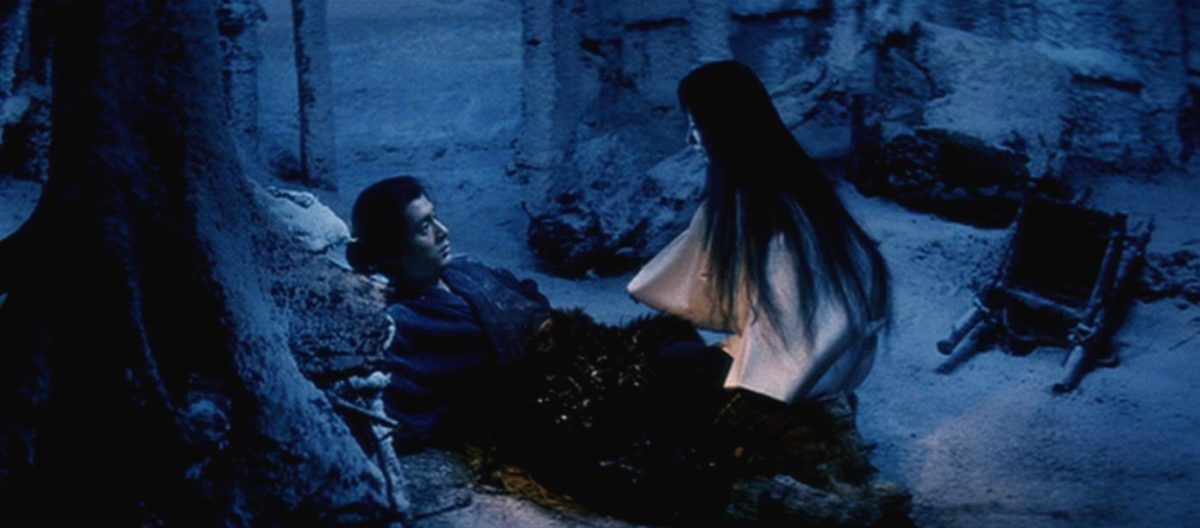
It consists of four stories, of which the first two have depicted ancient Japanese women’s beauty so magnificently and stunningly. Set in the Edo period, we can see the ancient Japanese costumes, culture, community and statuses. The typical womanly activities like walking, working, running, eating and behaving with their husband can be seen in a very Japanese savor.
The mesmerizing cinematography, Toru Takemitsu’s score, and the brilliant use of color have excessively intensified the typical beauty of ancient Japanese women. A surprising fact is that this beautiful film is a horror classic, except Japanese horrors are beautiful in film history. The whole film was shot onstage.
The first story, “The Black Hair”, shows the infidelity of the husband and the devotion of his wife toward him. This story largely based on the theme of guilt. Just watch this woman during all the scenes when her husband guiltily obsessed about his previous wife and realized the power of love.
The second story, “The Woman of the Snow”, has an even more beautiful woman set in a snowy environment. She intentionally meets a man who she marries. Even after she bears some children, she still has that charming beauty that she used to have in her youth.
5. Ugetsu (Kenji Mizoguchi, 1953)
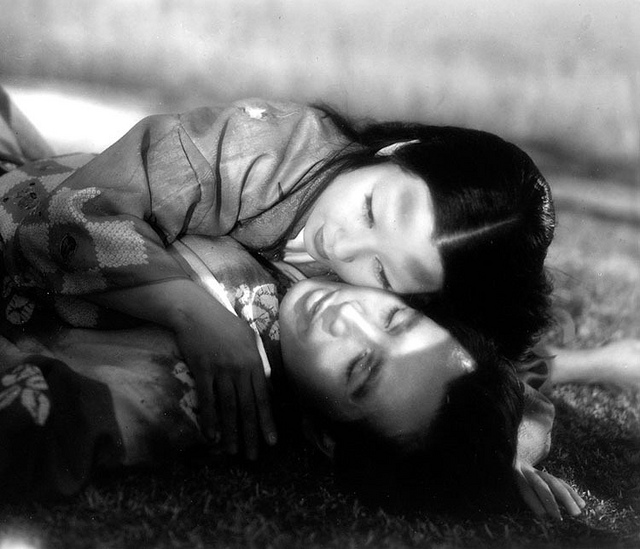
Another Jidaigeki film on this list, this great romantic film shows a wife’s devotion toward her husband. Machiko Kyo is the main actress here who is depicted beautifully. Kazuo Miyagawa’s camerawork gave a specific charm to this film.
Kenji Mizoguchi is a feminine director: almost all of his films have a female lead. He shows the real status of women in Japan, especially in old times. His other films like “Sansho the Bailiff”, “The Life of Oharu” and “The Crucified Lovers” are all worth checking out. All have depicted female beauty very hauntingly.
6. In the Realm of the Senses (Nagisa Oshima, 1976)
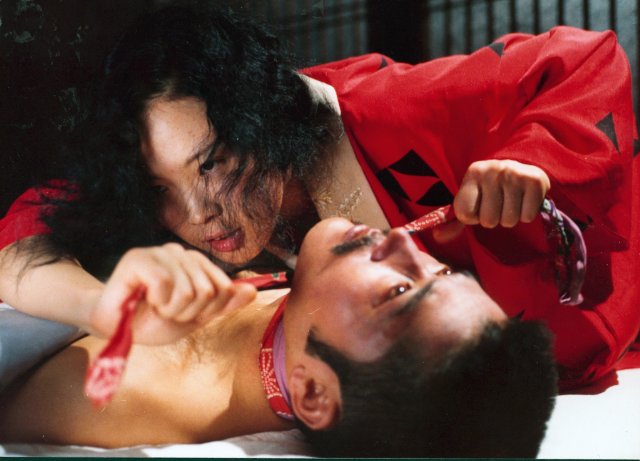
All of us want to make love with this film’s lusty protagonist, Sada Abe (played by Eiko Matsuda), but we still won’t dare to do it, because who knows what she will do? Abe is the ultimate example of a jealous woman. Based on the real incidents of the real Sada Abe, she is actually a folk hero in Japan.
During the entire film, you’ll see the highly erotic sex scenes and other such activities. If you want to know about Japanese geishas, this film is the most suitable for that. It is the best source to watch the sexual desire of women, their activities, behavior, jealousy, lust and love. There is a saying that women’s sexual desire can never be fulfilled, just like thousands of rivers and continuous rain can’t fulfill the sea’s desire of water. You can see this very thing here.
7. Gertrud (Carl Theodor Dreyer, 1964)
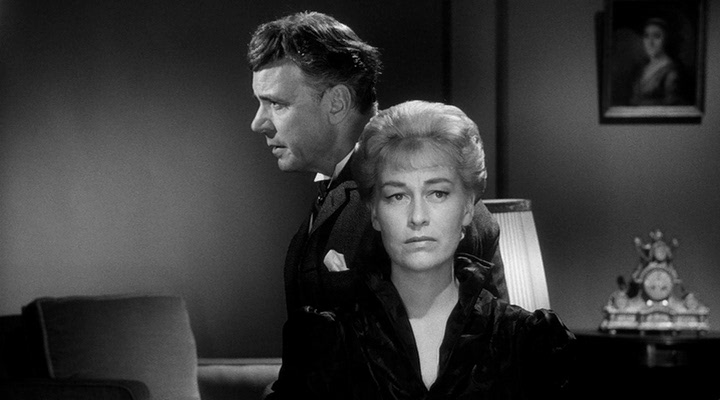
Generally it is said that women’s real happiness is love; love toward her real lover. If she can’t find her real crush (or lover), her whole life will be a long sad tale. Women may know that. Gertrud is such a woman who wants to find her love, but can’t because her lover and husband focus mainly on their careers. She doesn’t like the fact that her husband likes to give more time and passion to his career than to her. So, she finds her life very empty.
To find love, she tries to go away with her lover (another man), leaving her husband, but she can’t. She has had affairs with other men as well but she can’t find the very real love she had always tried to find. Gertrud is the ultimate example of a woman who searches for love in the creature called “man”.
Apart from Gertrud’s womanly character, her love-searching journey and lovely conversations with men, this film is also remembered for its hypnotic cinematography and long takes. This film wasn’t very appreciated during its release, but it is actually the greatest masterpiece from the great Carl Theodor Dreyer.
8. The Three Colors Trilogy (Krzysztof Kieslowski, 1993-1994)
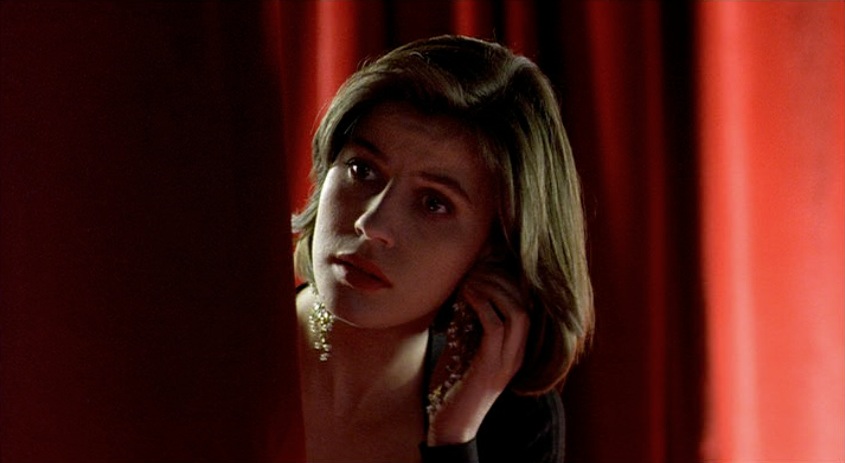
Of the other films by Krzysztof Kieslowski on this list, the whole “Color Trilogy” is included. “Three Colors: White” is an exception because it doesn’t have a female lead, but it has some great female beauty.
Irene Jacob is again the female lead in “Three Colors: Red” but other main characters are also interconnected. Actually, this film is a story of the unusual obsession of a single man who didn’t find a faithful woman in his life. One day, he meets a girl (played by Irene) and starts to believe that a woman can be faithful and love can be true. But he finds the right girl at wrong time. So what can he do?
There is a saying that “right comes at wrong time and wrong comes at right time”. That very thing can be seen in this film. Kieslowski has used the color red so strikingly and brilliantly and it has magnified Irene’s beauty immensely. Here, Irene is a very faithful and kind-hearted girl whose boyfriend is uncommonly doubtful about her fidelity.
“Three Colors: Blue” tells the story of a woman (played by Juliette Binoche) who wants to be free from her past painful experiences but can’t. The whole film revolves around her and her character. Kieslowski has used the color blue beautifully and brilliantly, mainly as the symbol of her past pain. Apart from Binoche’s haunting beauty and the cinematography, the film’s music is also the core subject, which tells many things about human emotions. Binoche is portrayed as the sad and tortured woman, though she is beautifully depicted.
“Three Colors: White” has few moments of women’s presence since it has a male lead and the whole film revolves around his character and his pain. He is deserted by his wife, who makes him overtly jealous and hurts him immensely. Now, he decides to take revenge on her. The use of the color white is brilliant and successful here. Julie Delpy plays the wife in this film.
9. Wings of Desire (Wim Wenders, 1987)
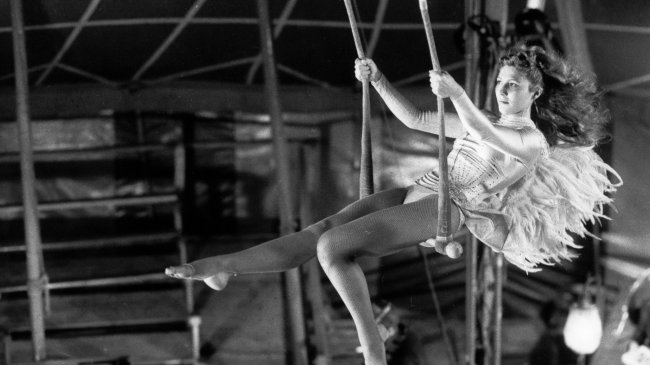
Wim Wenders used an unusual love story in this timeless masterpiece. An angel, who comes to Berlin, falls in love with a gorgeous trapeze artist. The most powerful and beautiful scenes are those where this girl is seen. All the scenes are stunning and hypnotic and they are like great painting. Her dancing, playing, walking, and sad and lonely moments are hypnotic. This film itself is like a painting.
Wenders achieved this unprecedented masterpiece in 1987 and since then he tried to overcome, or at least achieve this level of masterpiece but couldn’t. Ultimately, it is his greatest film.
10. The Innocent (Luchino Visconti, 1976)
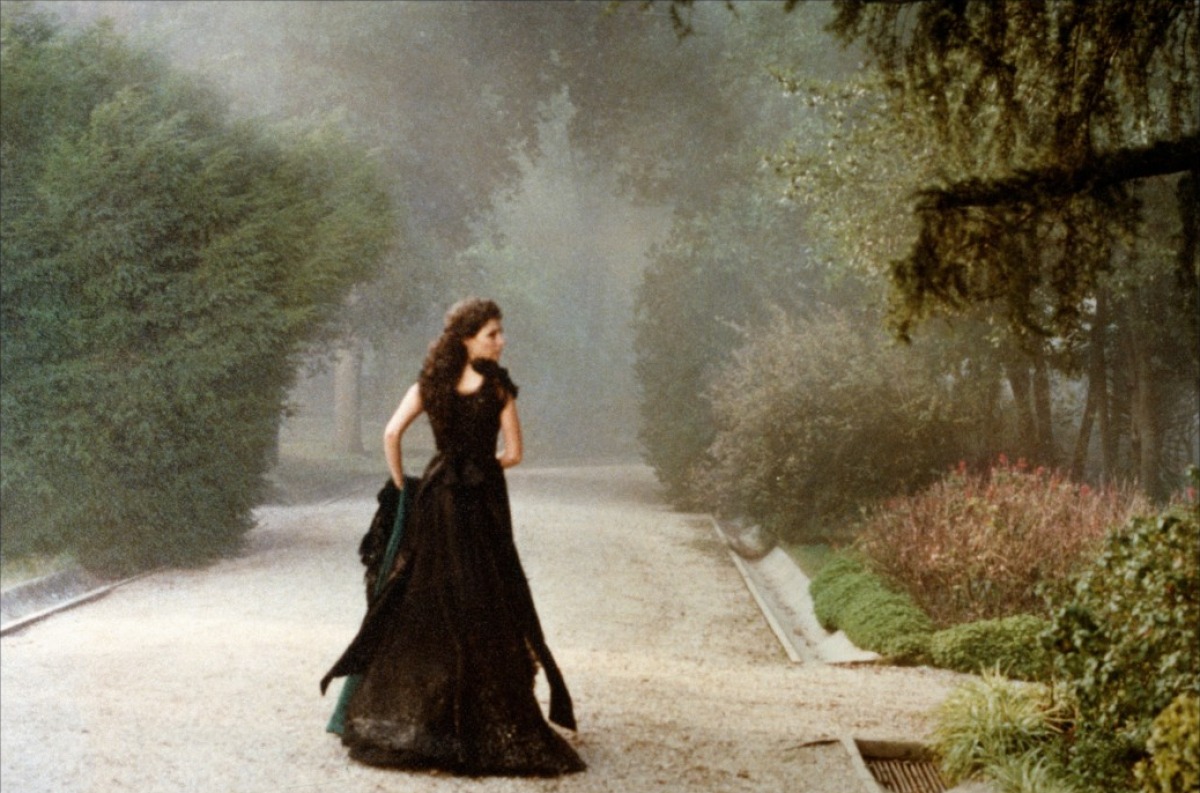
Luchino Visconti is one of the greatest directors when it comes to depicting womanly elements in films. “The Leopard” is generally hailed as his greatest film, but “The Innocent” is even more beautiful and greater in many standards. This film is mainly based on the theme of jealousy. Jealousy is the main weapon and two main enemies use it: husband and wife.
An aristocratic married man falls in love with a devastatingly beautiful and lusty widow. He doesn’t care about his wife and hurts her immensely. He thinks his wife can’t do anything about this, but she starts an affair with another man with whom she becomes pregnant. Even worse, her husband finds out that his wife is happy with that man, which hurts him badly.
Visconti weaved this love story in an aristocratic family who cares a great deal about fame and outer beauty. He has mainly shown the beauty of that unfaithful but immensely beautiful widow who likes to play with many men, who can use this weapon of jealousy so masterfully.